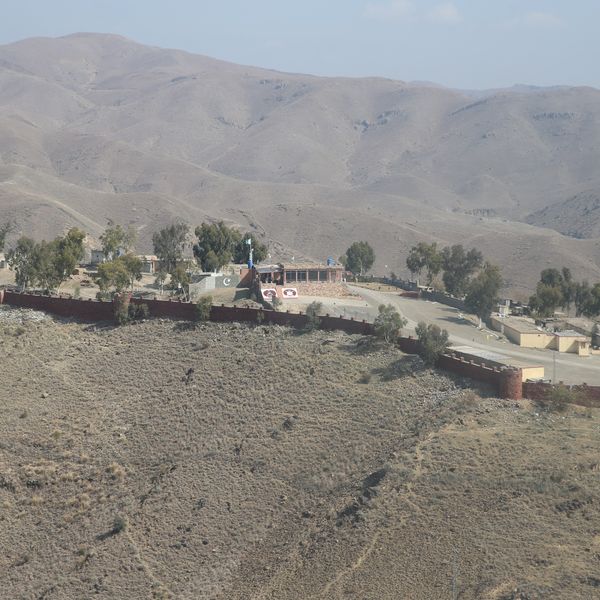Pakistan's economy showing signs of stability and recovery: ADB
Stable macroeconomic environment and ongoing reforms support 2.5% growth forecast for FY2025; inflation projected to fall sharply

Haris Zamir
Business Editor
Experience of almost 33 years where started the journey of financial journalism from Business Recorder in 1992. From 2006 onwards attached with Television Media worked at Sun Tv, Dawn Tv, Geo Tv and Dunya Tv. During the period also worked as a stringer for Bloomberg for seven years and Dow Jones for five years. Also wrote articles for several highly acclaimed periodicals like the Newsline, Pakistan Gulf Economist and Money Matters (The News publications)

Pakistan’s economy is showing signs of recovery and macroeconomic stability as the impact of tight fiscal discipline and key structural reforms begins to take hold, according to the Asian Development Bank’s (ADB) latest Asian Development Outlook (ADO) April 2025.
The ADB projects Pakistan’s real gross domestic product (GDP) to grow by 2.5% in FY25 (ending June 30, 2025), matching the growth rate recorded in FY24. Growth is expected to rise modestly to 3.0% in FY26, driven by improving investor confidence, a stable exchange rate, and continued progress under the IMF Extended Fund Facility initiated in October.
“Pakistan’s economy has benefitted from improved macroeconomic stability through robust reform implementation in areas such as tax policy and energy sector viability,” said Emma Fan, ADB Country Director for Pakistan. “Growth is projected to persist in 2025 and to increase in 2026. Sustained implementation of policy reforms is vital to buttress this growth trajectory and fortify fiscal and external buffers.”
The growth outlook is being supported by a rebound in private sector investment, recent monetary easing, and a more stable economic environment. Industrial and service sectors are expected to benefit the most, while strong remittances, easing inflation, and better aggregate demand are likely to further fuel growth.
Inflation, which averaged 23.4% in FY24, is forecast to plummet to 6.0% in FY25 and 5.8% in FY26, supported by lower food inflation, stable global commodity prices, and moderate domestic demand.
The current account deficit is expected to remain contained, although rising imports—driven by an uptick in economic activity—could offset the surplus accumulated earlier in the year. Remittances surged nearly 33% to $20.8 billion during the first seven months of FY25 and are anticipated to stay robust due to greater exchange rate stability, improved digital infrastructure, and higher outbound migration. Official reserves are projected to reach $13 billion (2.9 months of import cover) by June 2025.
ADB also emphasized the economic potential of increased female labor force participation. Empowering more women to work through education, vocational training, safe transportation, and policy support could substantially boost national productivity and economic output.
However, the ADB warned of significant downside risks. These include premature policy easing, fiscal slippages, renewed balance-of-payment pressures, and political instability, which could derail reform momentum. Environmental threats such as drought and external risks like global food and commodity price hikes could also undermine growth and macroeconomic stability.
The ADB concluded that adherence to fiscal consolidation and reform agendas remains critical for resilience and sustainable, inclusive growth in Pakistan.
Women's labor force participation
While women comprise almost half of Pakistan’s total working age population, their labor force participation remains low at 23% in FY21, said a report of Asian Development Bank released on Wednesday.
This is below the average of 27% in South Asia and 35% in lower-middle-income countries globally.
Pakistan’s low female labor force participation represents a substantial loss in potential productivity and economic growth, while also reinforcing existing gender disparities. Increasing women’s participation in the workforce could significantly enhance national output and advance gender empowerment, as studies show female earners tend to have greater influence in household decision-making, the report stated.
However, numerous barriers continue to limit women’s entry into the labor force. Limited access to quality education and vocational training hampers their ability to compete in the job market, restricting employment opportunities. Deep-rooted patriarchal norms and cultural expectations further discourage women from seeking work outside the home, as traditional roles often prioritize caregiving and domestic responsibilities.
Mobility also remains a major challenge. The absence of safe, affordable, and accessible transportation options restricts women’s ability to travel to and from work. High levels of poverty and broader economic instability may also compel women to prioritize unpaid household labor over paid work to support their families. The lack of reliable and affordable childcare services forces many women to leave the workforce after childbirth.
Workplace challenges — such as discrimination, harassment, biased recruitment practices, and the absence of family-friendly policies — create additional obstacles that deter women from joining or remaining in the labor force..
Government-led initiatives have shown promising results. For instance, the Women on Wheels program, launched in 2023, enabled 22,000 public sector women to purchase scooters and motorcycles at subsidized rates. Expanding this program and introducing rental options could further enhance its impact. Another notable success is the Peshawar Bus Rapid Transit (BRT) system, which increased women’s public transport usage from 2% in 2020 to 30% in 2024, while raising female employment in the transport sector from nearly zero to over 10%, according to the report.
Similar infrastructure and mobility projects in other major cities could be instrumental in supporting women’s economic participation and closing the gender gap in the workforce.










Comments
See what people are discussing